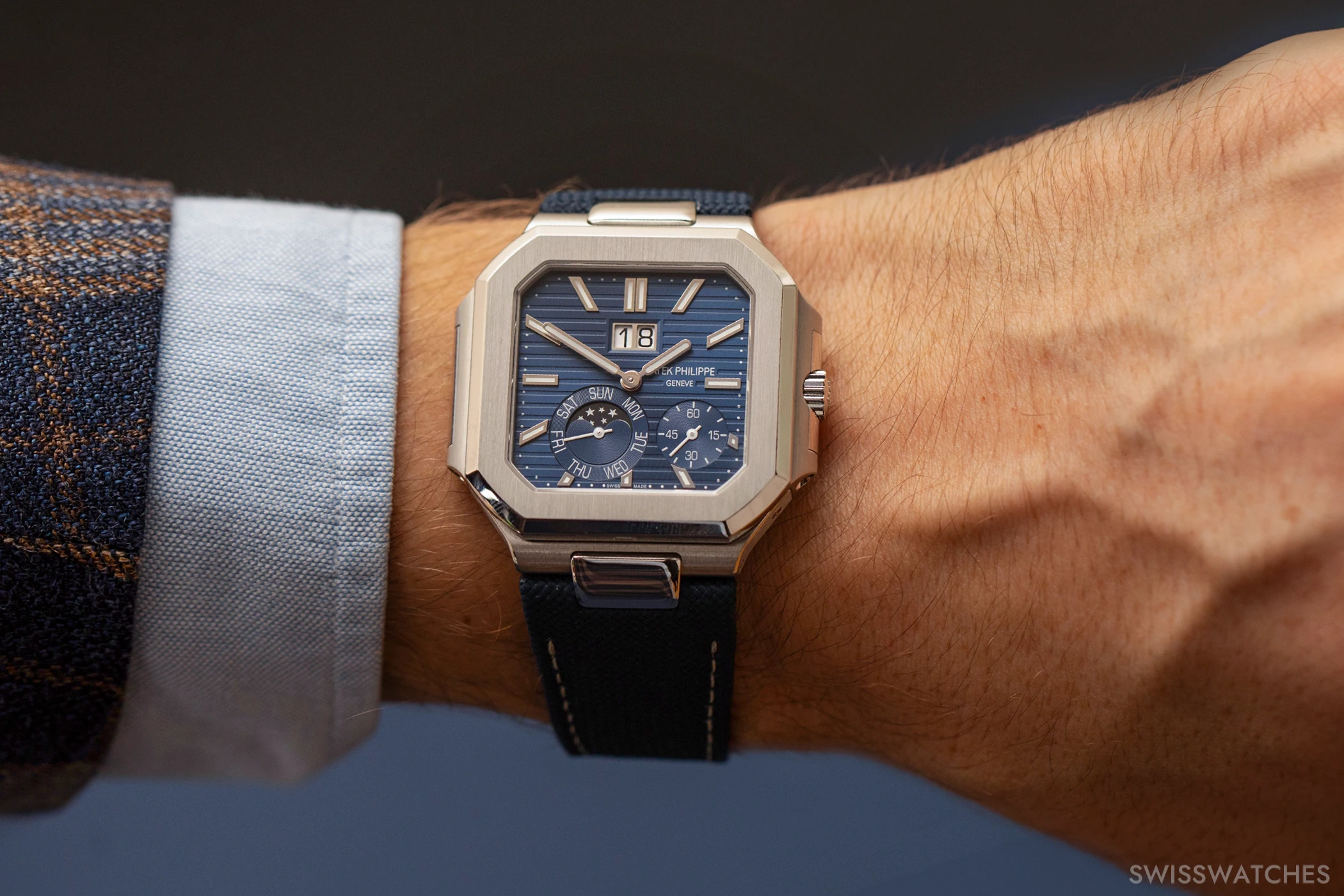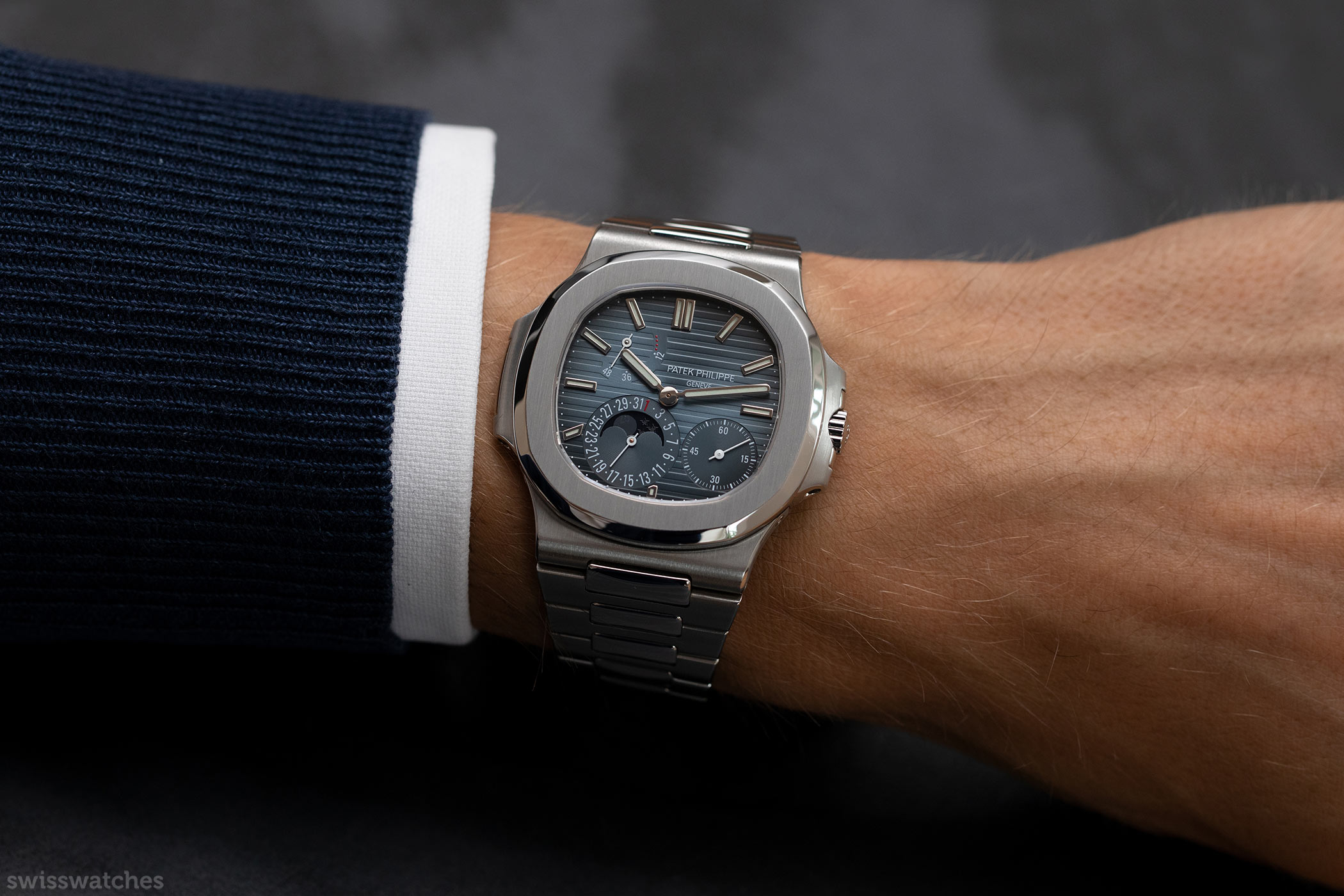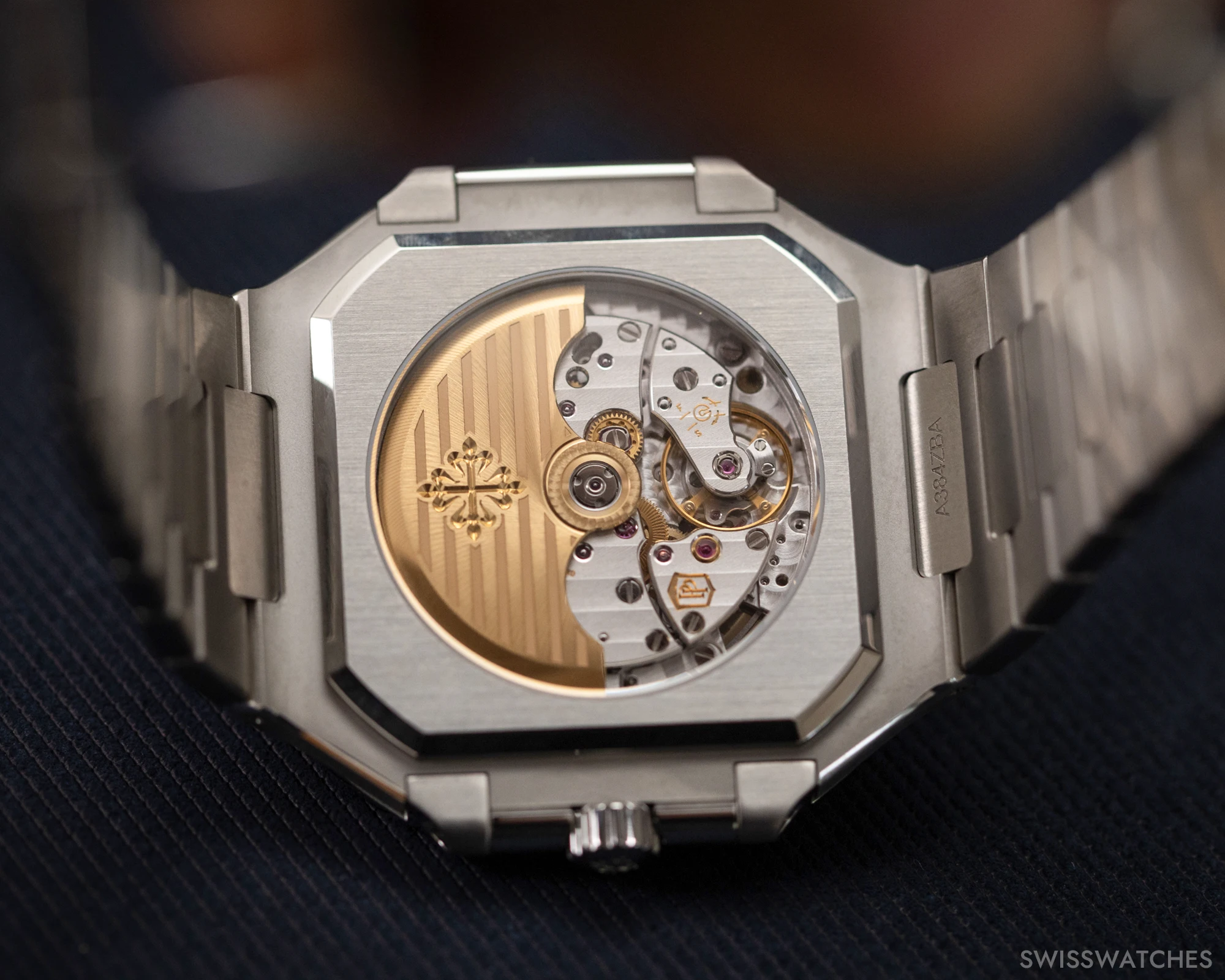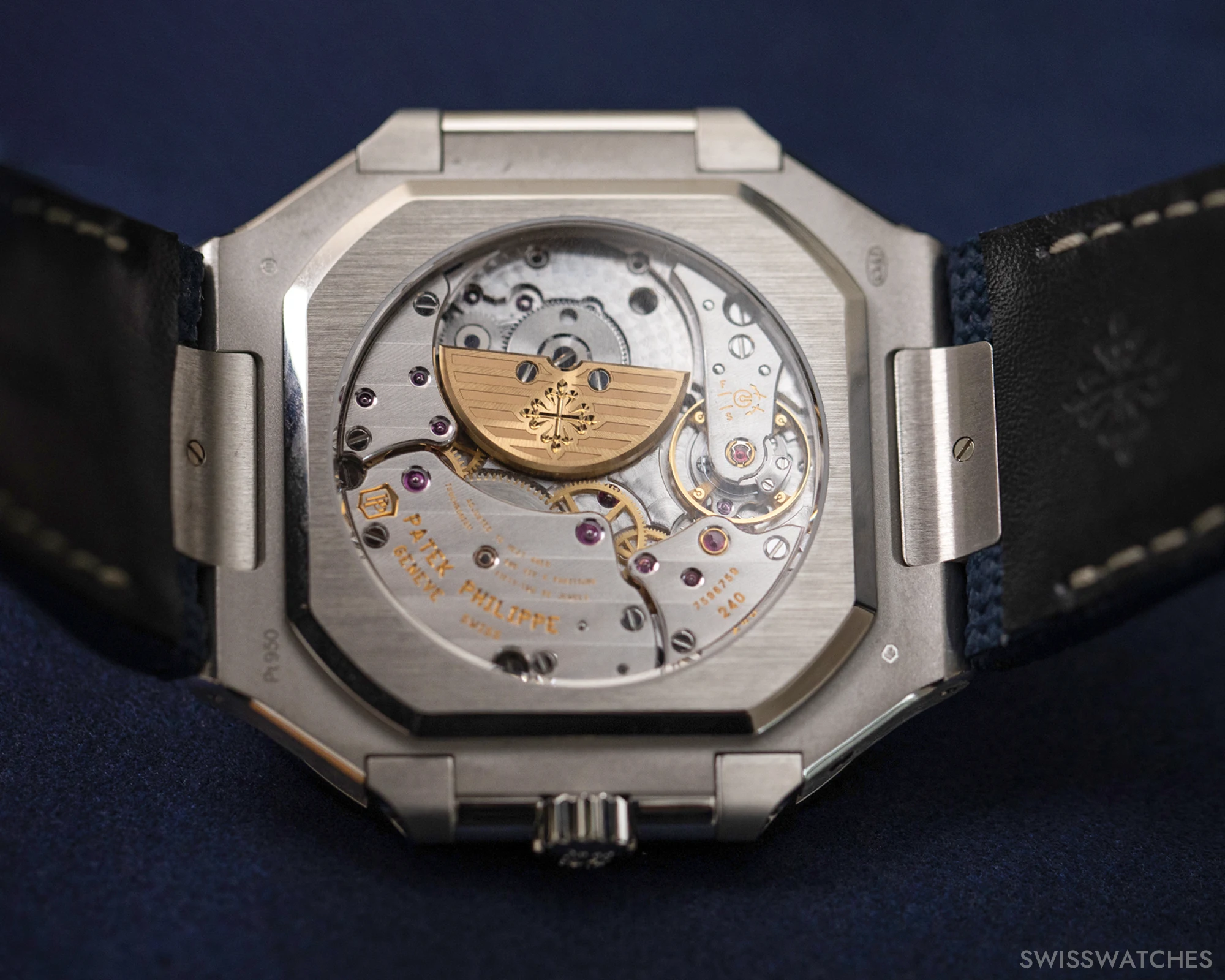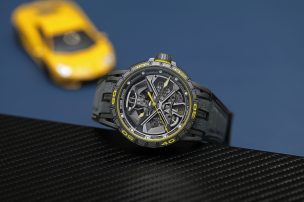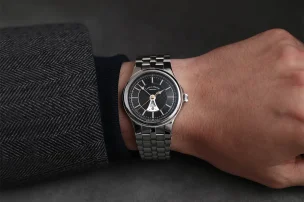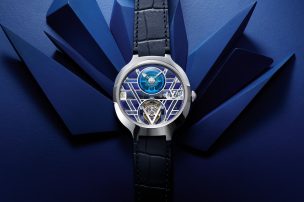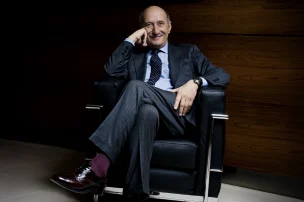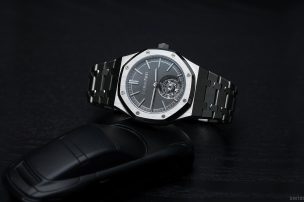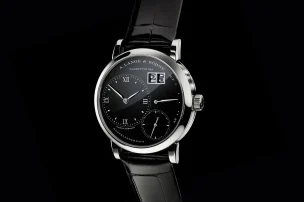
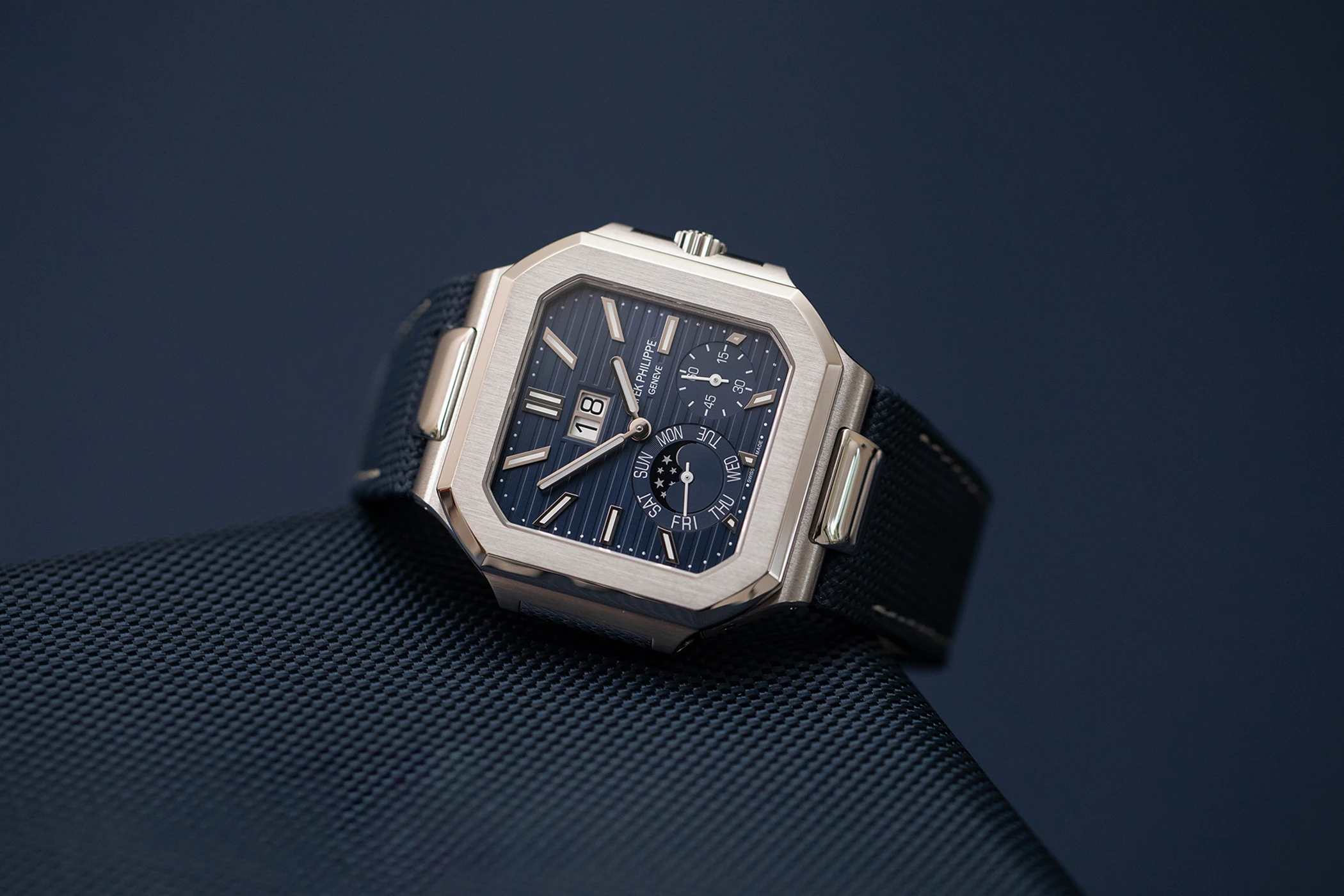
The Patek Philippe Cubitus: Everything You Need to Know About The New Line
The watch industry has something of a penchant for superlatives, but it would be no exaggeration to say that this is, in many ways, the most exciting new product of the year: the Patek Philippe Cubitus. For the manufacture, it is the first new watch collection in a quarter of a century – the predecessor being the Twenty-4, launched in 1999. Nevertheless, Thierry Stern is remarkably relaxed at the collection’s inaugural presentation in Munich. Yes, a completely new line is of course something special, but, articulates Stern: ‘At the same time, we know how to present new watches. We normally present 15 to 20 new models a year, but today we are only presenting three. So even though the premiere is exciting and challenging for everyone involved at Patek Philippe, ultimately, it’s nothing out of the ordinary at our end.’ The company has done its homework and has faith in its product.

Thierry Stern, President of Patek Philippe
Patek Philippe is launching the watch in the following iterations: Reference 5821/1A-001 in stainless steel with a metal bracelet and olive-green sunburst dial; Reference 5821/AR-001 as a bicolour model in steel and rose gold, also with a metal bracelet; and, as a horological highlight, a Cubitus reference in platinum with instantaneous jumping displays for the big date, day of the week and moonphase: Reference 5822P-001 with a blue strap made of composite material with a textile look. People have been discussing the new model on social media for days, and there are plenty of strong opinions. For the premiere of the Patek Philippe Cubitus, the most important German collectors and international friends of the manufacture were invited to Munich as the Stern family proudly presented the watch to a good 600 guests at the Bergson Kunstkraftwerk: square, angular, clearly closely related to the Nautilus, clearly a Patek Philippe – and yet somehow very different.
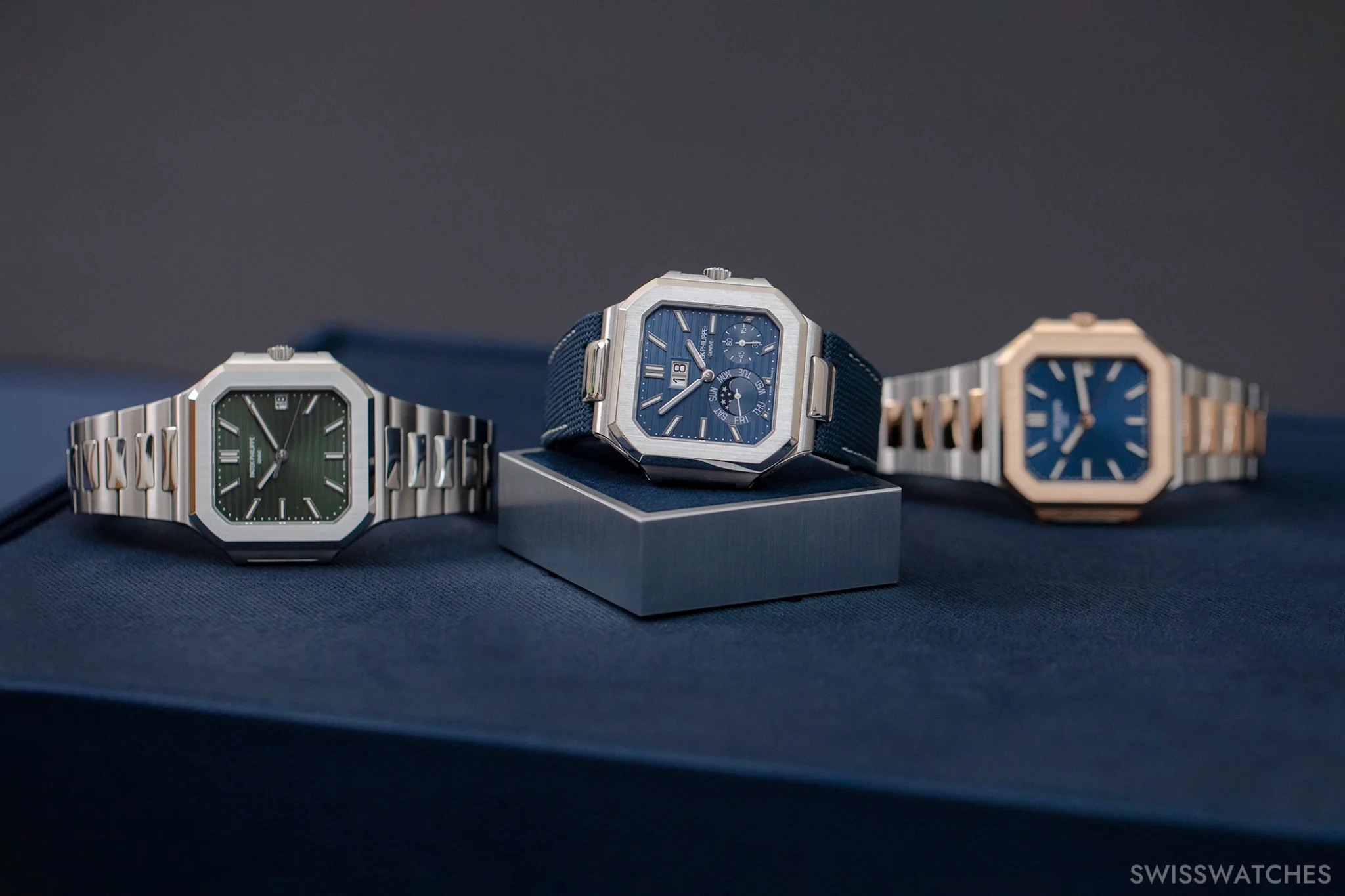
What is so special about the new Patek Philippe Cubitus?
It is well known that Patek Philippe has carved out a special position for itself in the world of watches. No other manufacture can boast this unique blend of innovation and tradition, prestige and history, global brand identity and family business. However, this position also means that every new launch is scrutinised and inevitably closely critiqued. When an advert for the new Patek Philippe Cubitus was inadvertently published a few days before the official premiere and rapidly spread on social media, there was hardly any other topic of discussion in the community of watch enthusiasts. Only very, very few manufactures trigger such reactions with their products. The Cubitus is not just another new launch, it is the first completely new watch collection from Patek Philippe in 25 years – and the first men’s collection since the introduction of the Aquanaut in 1997.
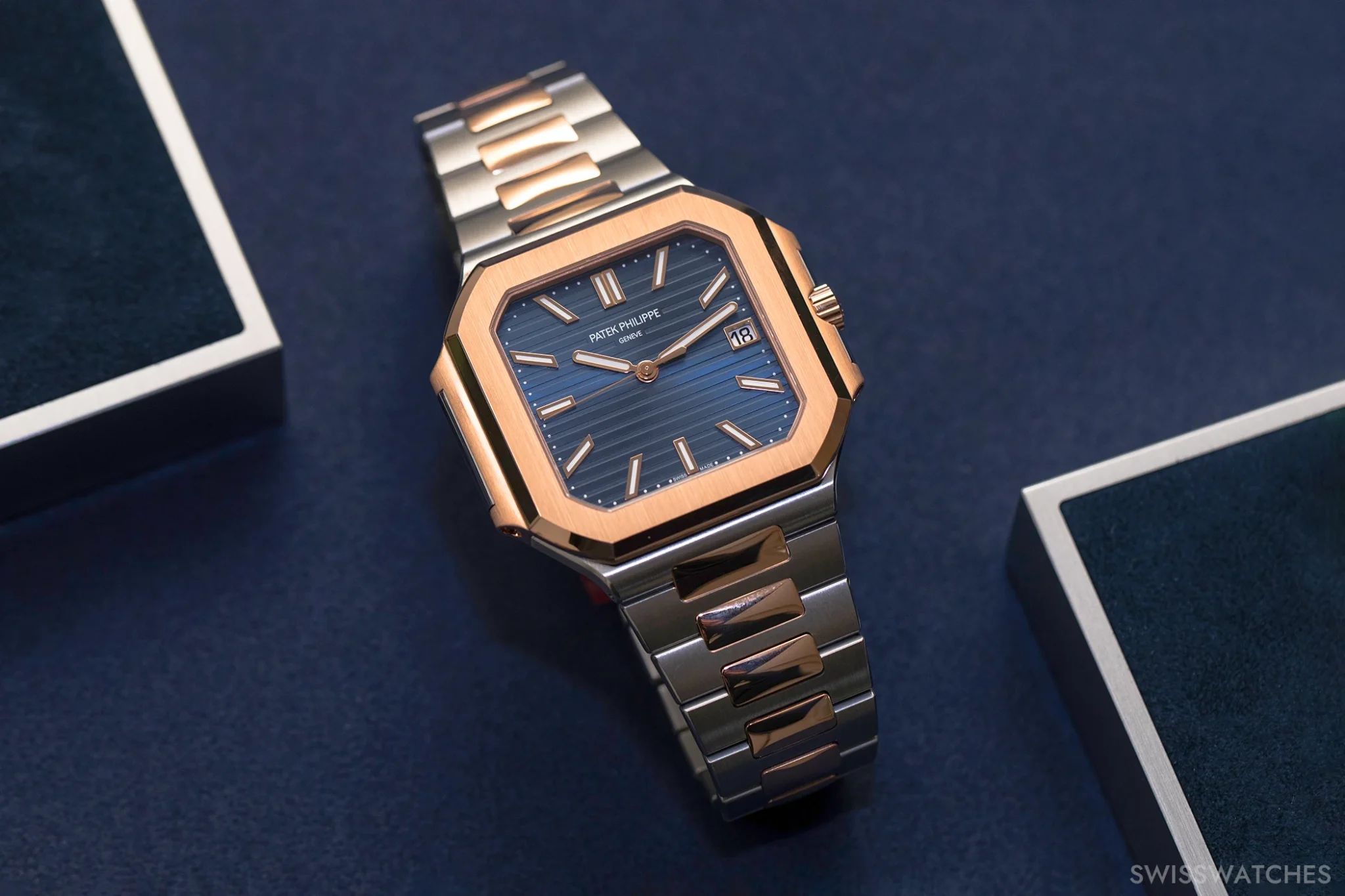
The new Cubitus ref. 5821-1AR-001
Thierry Stern, the fourth generation of the Stern family, has been heading the manufacture as president since 2009. He has significantly shaped the company and set new trends. The look of the Calatravas has been revised and partially rejuvenated in recent years, and references such as the 5212A, with its weekly calendar and handwritten-inspired typography, have brought new looks to the horology house. The use of precious stones in the company’s Grande Complications has become more common, the colours of the dials and their structures are often more intense and varied, and new models such as the reference 5524, a Calatrava Pilot Travel Time, are evidence of a constantly evolving design language.
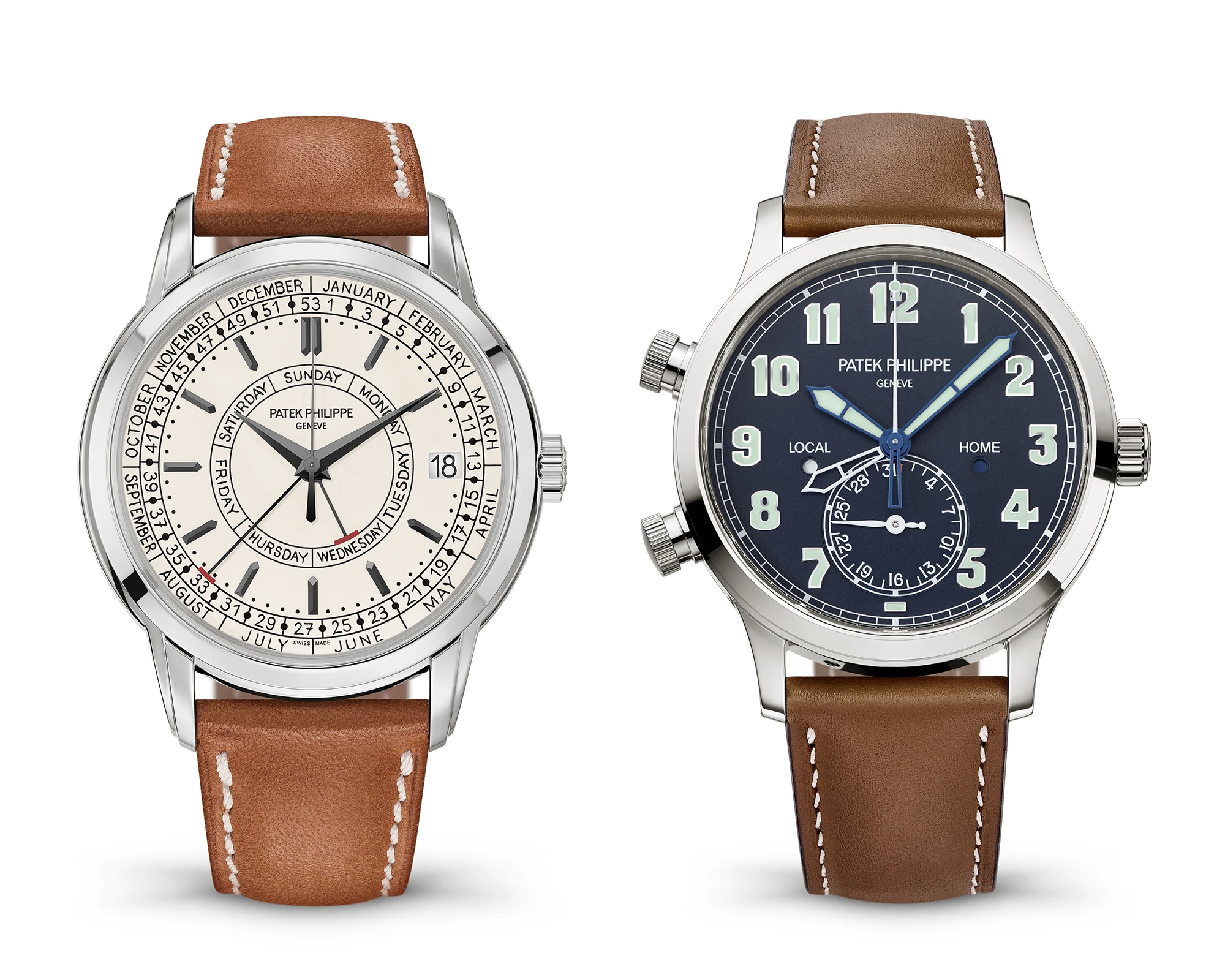
The Calatrava Weekly Calendar Ref. 5212A and the Calatrava Pilot Travel Time Ref. 5524G
However, a completely new collection is two times bigger and more groundbreaking, especially as the Patek Philippe Cubitus, with its sporty accents and a diameter of 45 mm, should also appeal to those who may not yet own a timepiece from the company. It is therefore no exaggeration to say that the Cubitus is part of the future of Patek Philippe, and far more than a mere driver of sales and profit. It is an affair of the heart for Thierry Stern, who explained: ‘For a long time – actually always – I wanted to have a square watch in the collection. This is by no means easy, because 85 percent of all watches worldwide are round. But even when I was young, I really wanted to design a beautiful square watch for the collection.’
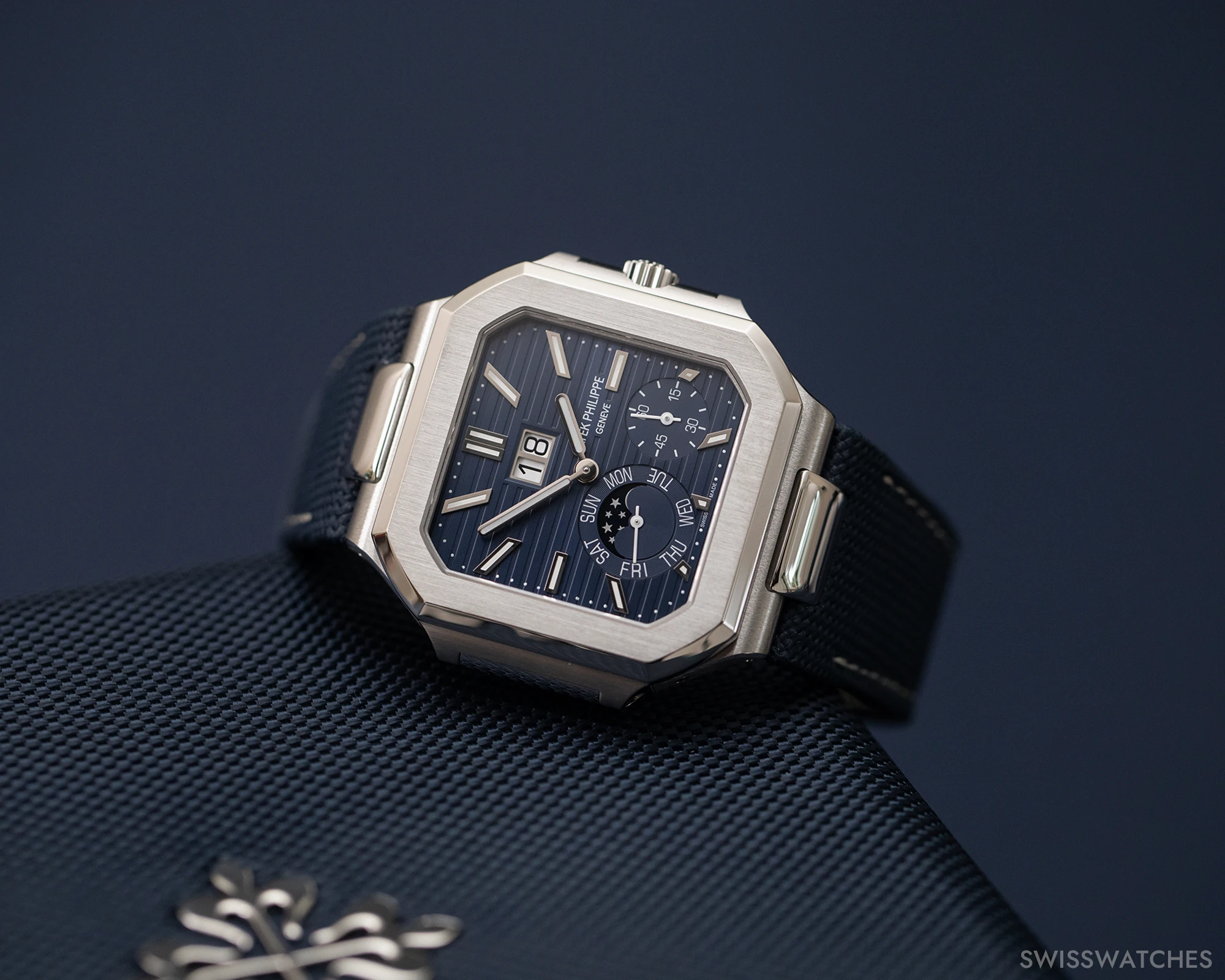
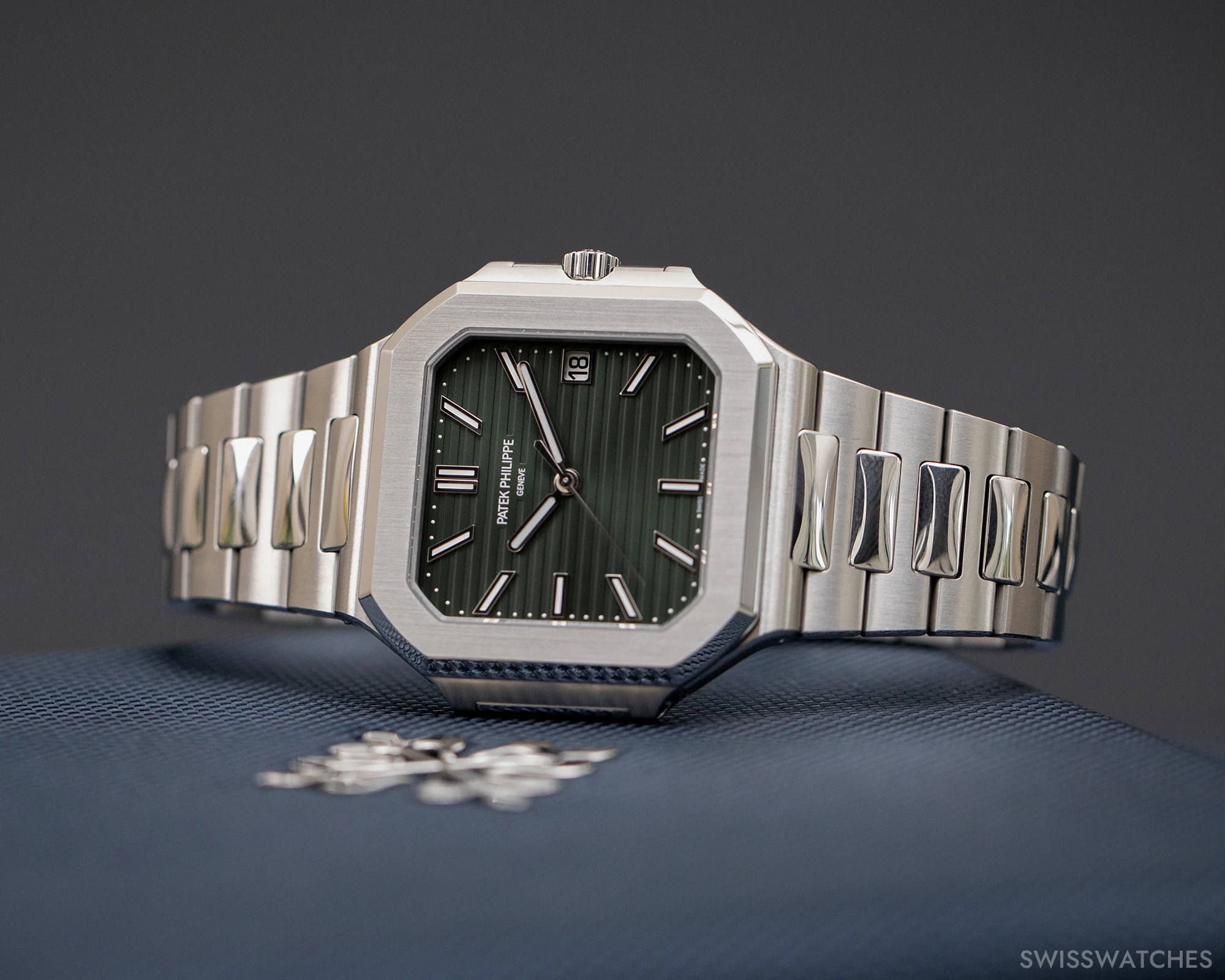
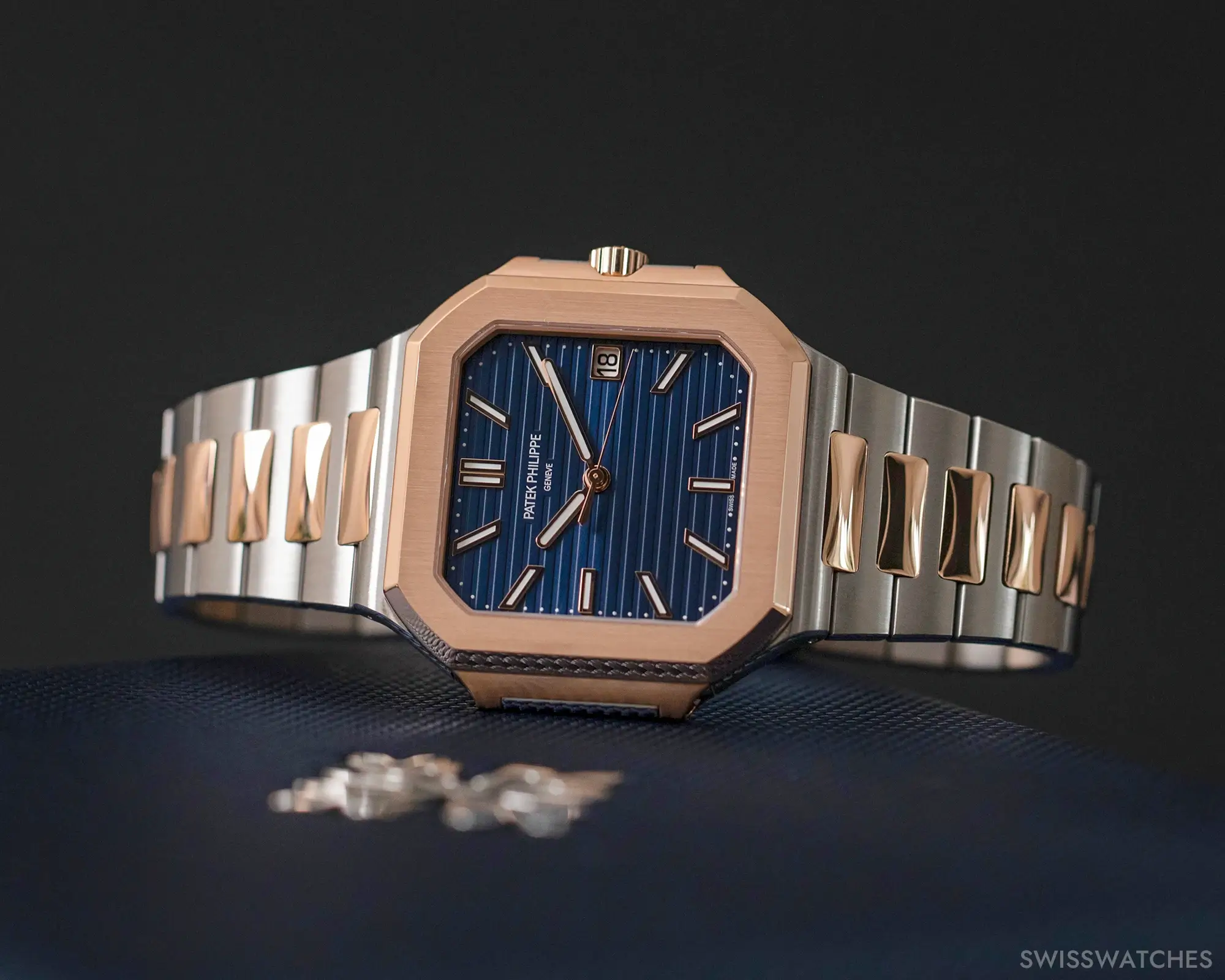
The time was finally ripe. A lot of thought and energy has been invested into the realisation of this new collection over the past four years, and the will to inspire customers is correspondingly great. The aim is to avoid a repeat of the fate of the Neptune, a watch designed as a steel alternative to the Nautilus, which was launched in 1996 and removed from the catalogue in 2005. As with all of the company’s collections, the Patek Philippe Cubitus is designed not in terms of trends or zeitgeist, but in terms of generations. Or, in the words of Stern: ‘Our plans extend to the year 2039, so we already have many ‘siblings’ and ‘cousins’ lined up for the future.
How good is the new Patek Philippe Cubitus?
To answer this question, we must ask a counter-question: What exactly is expected of a new Patek Philippe collection? The problem is that everyone – whether they are collectors, fans, horology enthusiasts or simply semi-interested bystanders – will answer this question differently.
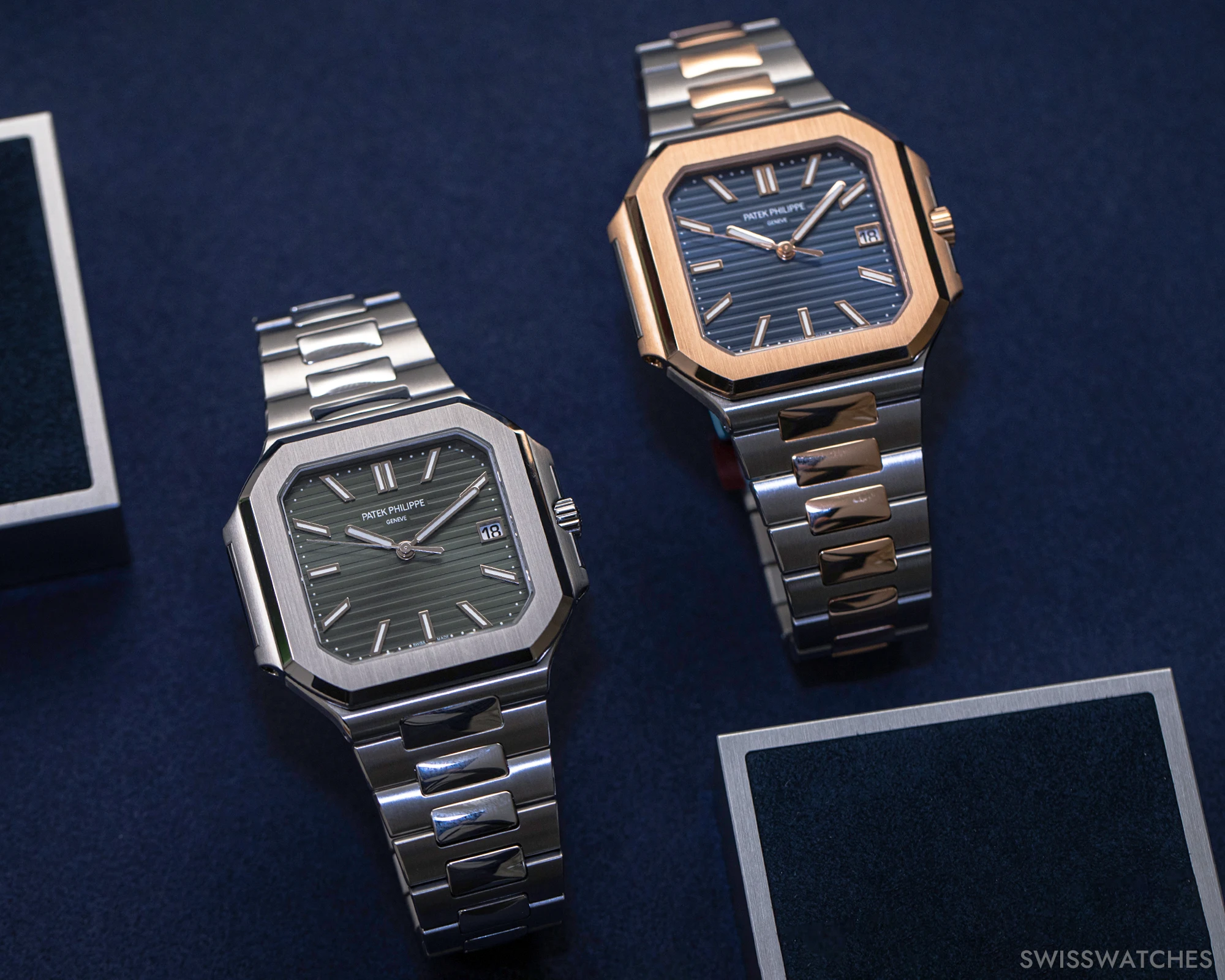
At first glance, many things about the Cubitus don’t seem so new: the dial, with its horizontal relief embossing, is familiar from the Nautilus collection, as are the hands. The positioning of the small seconds and moonphase on the dial of the annual calendar is also very reminiscent of the Nautilus 5712, as are the bracelets. So, are there too many similarities for the first new collection in a quarter of a century? Is the Cubitus ultimately an edgier, more testosterone-fuelled Nautilus? Or is it good, right, and fairly normal to cultivate familiar design codes?
The new Cubitus ref. 5822 and the Nautilus ref. 5712
Thierry Stern explains that the company experimented with other dials, but the aesthetics of the Nautilus are successful for good reason, and the complexity of the dial deserves to be copied. The similarities to the Nautilus and Aquanaut were therefore a very conscious decision – try creating something better. On the wrist, the Cubitus definitely has a very unique presence, which is mainly due to the new case, which is square at first glance and octagonal at second glance. With a diameter of 45 mm, it is clearly one of the company’s larger watches, but also wears surprisingly well on slimmer wrists, which is largely due to the low case height. When you look at the sides, you immediately think of the Nautilus, which is recognised as one of the most comfortable watches in the luxury sports segment, although the platinum version is the most opulent on the wrist due to its weight.
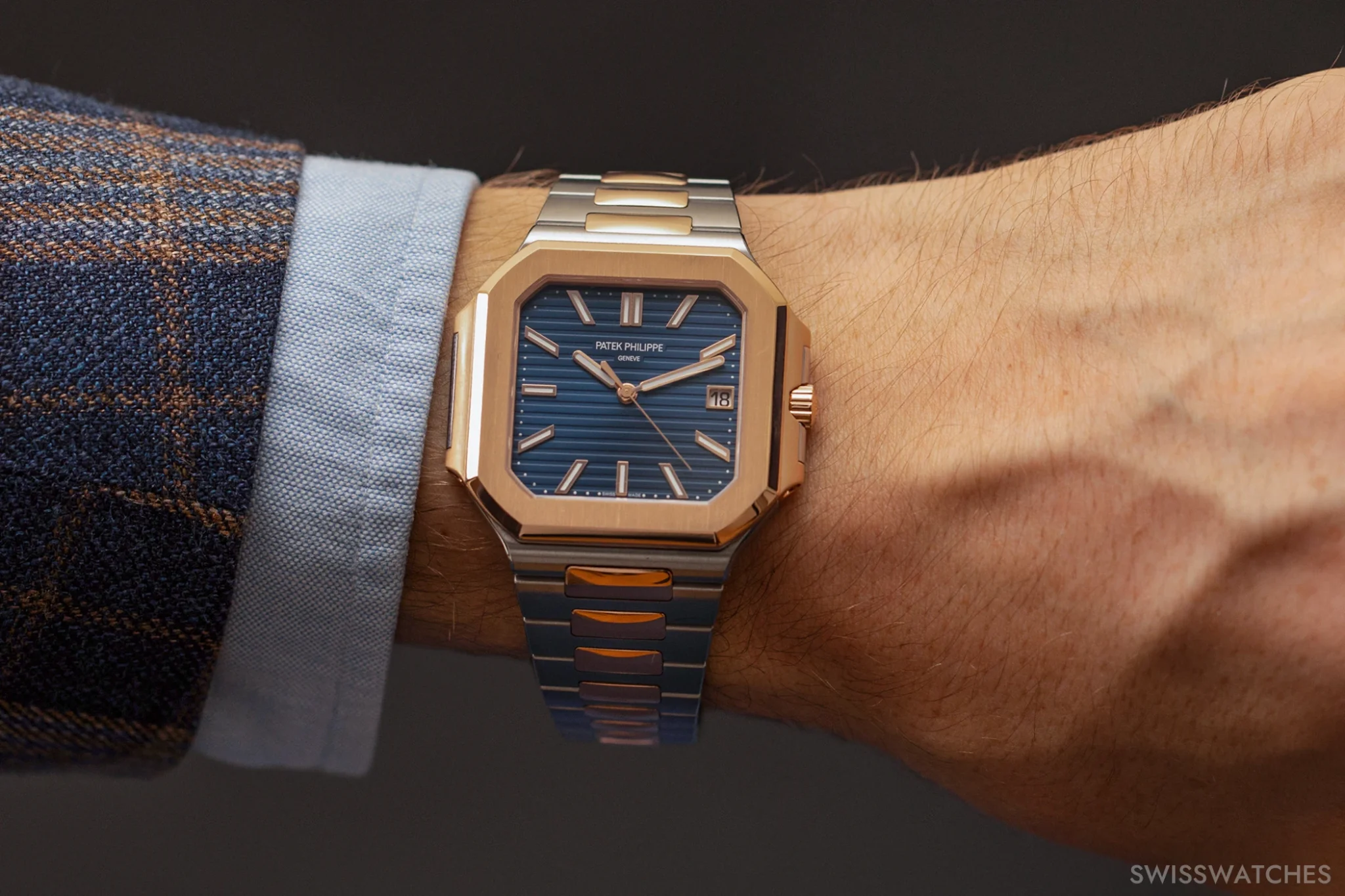
Which movement does it use?
The 5821 references in steel and bicolour use the well-known 26-330 S C movement, which is already used in numerous Calatrava and Nautilus references. The big innovation is the calibre 240 PS CI J LU from the platinum reference 5822. It is this platinum version that boasts technical innovations and should be seen as a statement that the Cubitus is indeed a new line, but not a new entry-level collection (as has been widely rumoured). This calibre took six years to develop before Thierry Stern has decided that it should make its debut in the Cubitus. A total of six new patents have been filed for the movement with a large date and instantaneous jumping display for the date, day of the week and moonphase, relating to energy management for the displays and their simultaneous jumps within 18 milliseconds. The well-known 240 PS movement has been massively modified and, in particular, the mechanism for the instantaneous jumping displays has been added. Despite this, the new calibre 240 PS CI J LU is only 4.76 mm high. This is because Thierry Stern specified that the watch should be flat. The calibre now has its very own place in the world of Patek Philippe watchmaking. Ultimately, it primarily has a completely normal calendar function; each of the company’s annual calendars requires fewer corrections, which in this case are made via small pushers on the short flanks of the octagon. At the same time, in terms of the complexity of the construction and the 353 parts required, it is at least as demanding as some of the calibres created for the company’s Grande Complications.
Facts and figures
All three Cubitus variants measure 45 mm in diameter, measured from the short flank at 10 o’clock to the short flank at 16 o’clock. Reference 5882 is 9.6 mm high, while reference 5821 is slightly slimmer at 8.3 mm. What they have in common is that they are water-resistant to 30 metres, aka the new Patek Philippe standard.
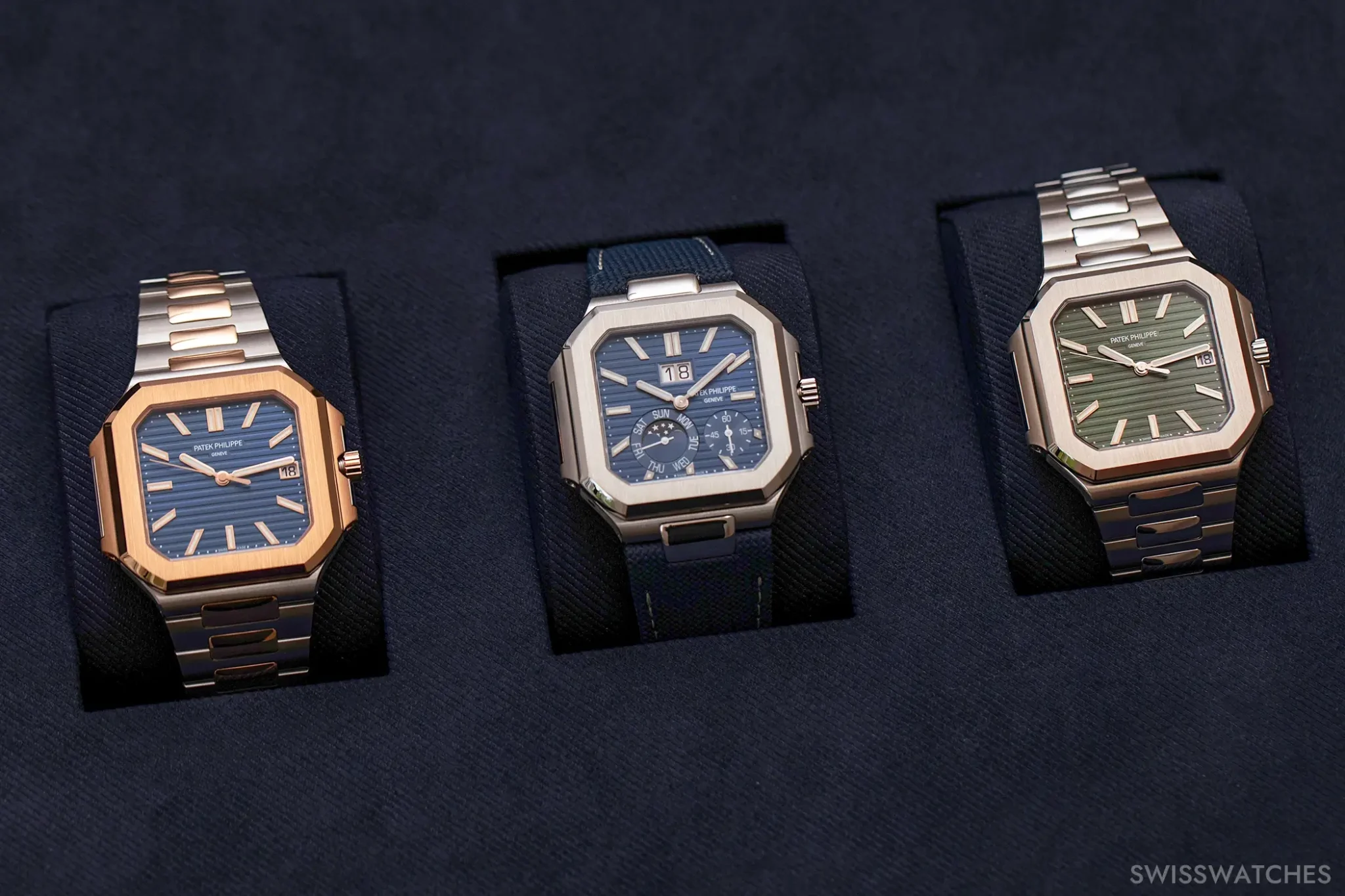
Does the Patek Philippe Cubitus take inspiration from historical models?
For those who see the Cubitus as an edgy, sporty newcomer to the world of Patek Philippe, the historical model is probably the Reference 96 from the 1930s, the first Calatrava ever produced. The aforementioned design codes of the Nautilus are also evident. Above all, however, the Cubitus joins a long line of square Patek Philippe models. Since the Cubitus design first became known shortly prior to its release, there has been much talk and criticism of the angular models of other manufactures; from Cartier to Bell & Ross, just about every name that can also boast a watch with even remotely comparable proportions has been mentioned. As obvious as these associations may be, one thing is certain: Patek Philippe has been represented in this segment for a very long time. It is probably not without reason that the Stern family has primarily shown angular references from the history of the company via Instagram in recent weeks.
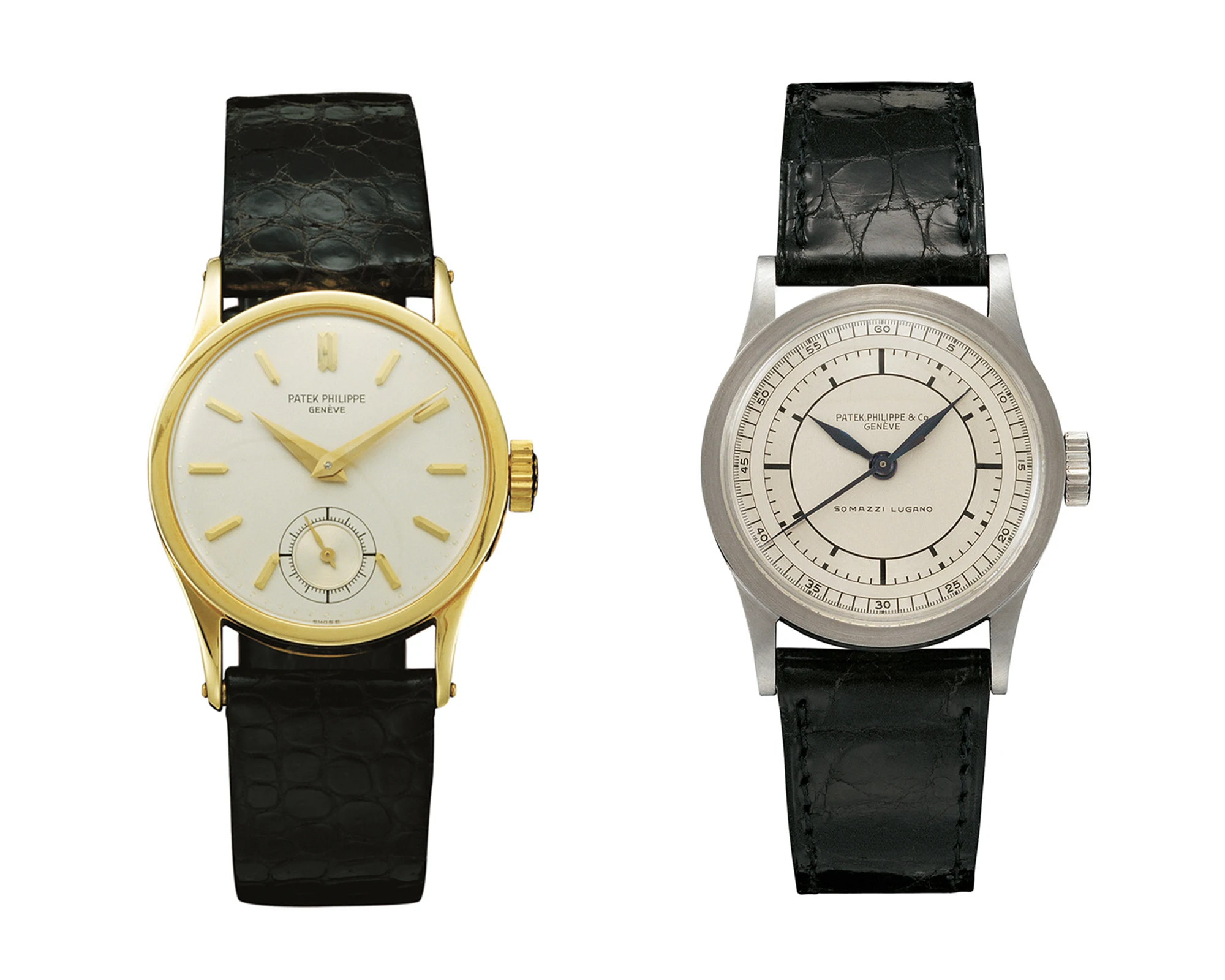
The Calatrava Ref. 96 and the Ref. 96 SC
In the 1920s, the Inv. P-739 was produced; a square minute repeater for the wrist. Reference 77 was produced in the 1930s, followed by Reference 492 and Reference 1485 until the end of the 1940s. Both were also square.
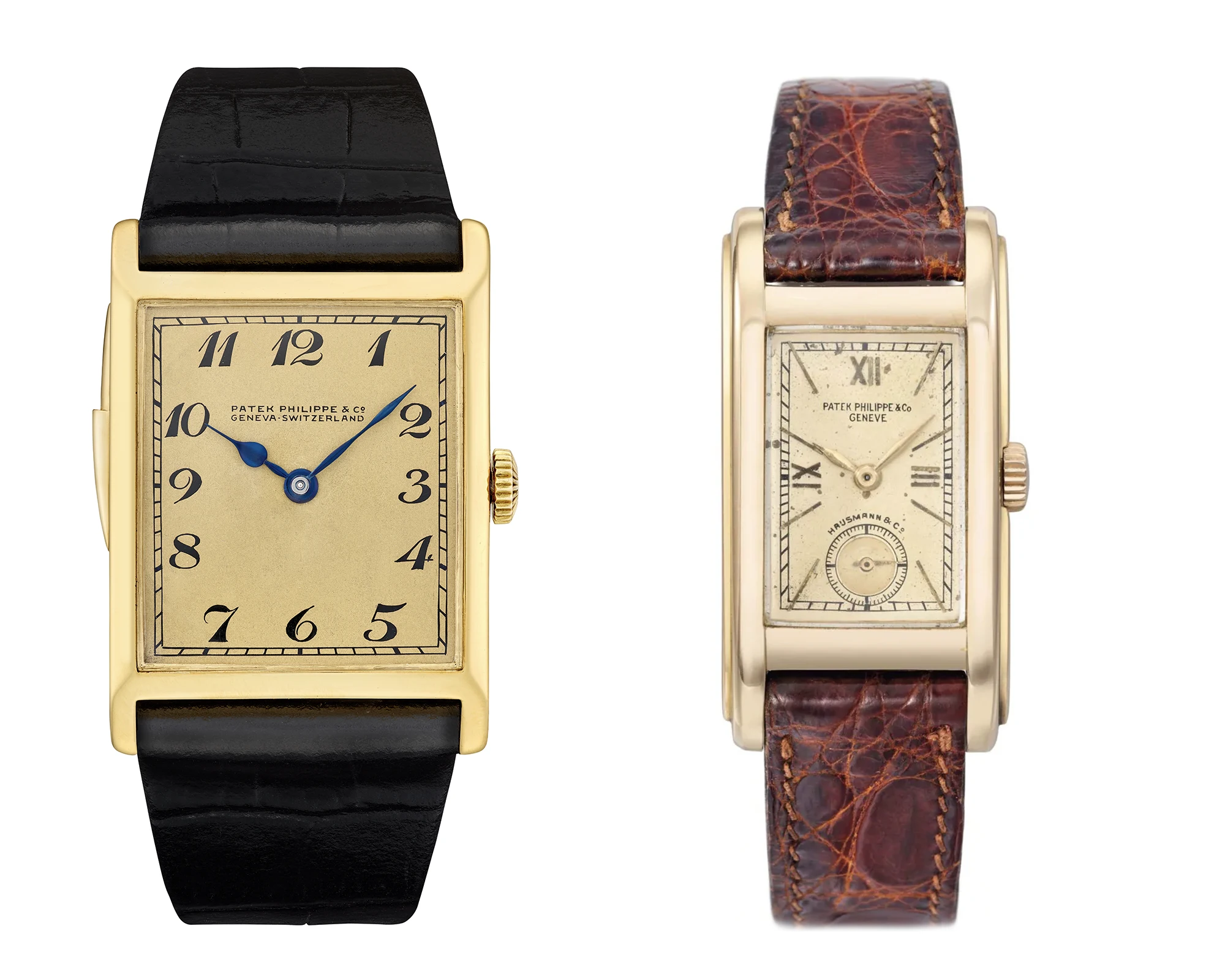
The Ref. P-739 and the Ref. 492
Credit © Sotheby’s
The catalogue from these decades reveals numerous models that play with this angular appearance at first glance, but have very different and sometimes wonderfully curved case shapes: Reference 2441, nicknamed the ‘Eiffel Tower’, or Reference 2442, known as the ‘Marylin Monroe’ due to its curved side flanks.
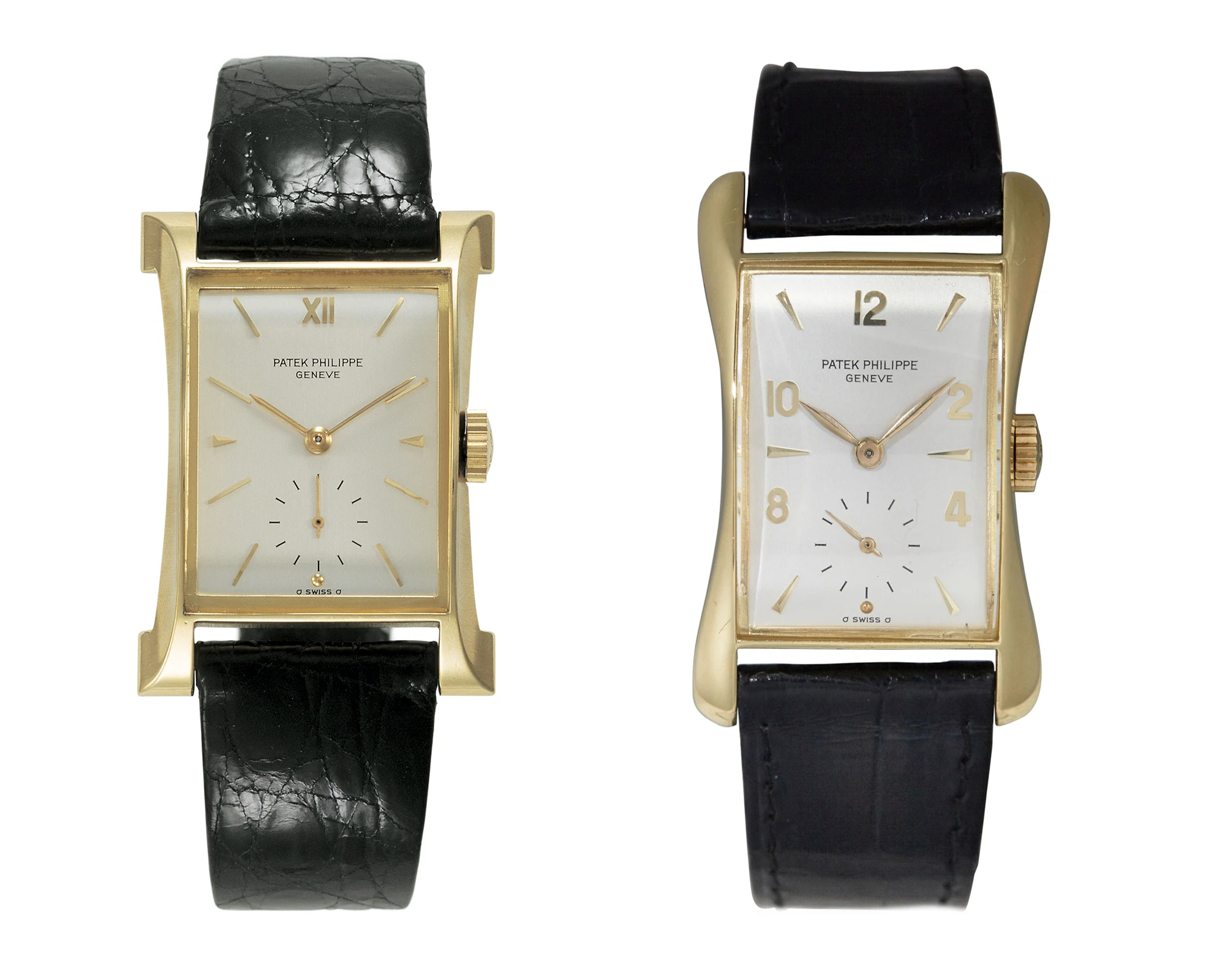
The Ref. 2441 and the Ref. 2442
Credit © Christie’s
Square references can also be found when looking back: Reference 2514 from the 1950s, for example. The ‘Beta 21’ references 3587 and 3597 are also reminiscent of the Cubitus in some respects. With a diameter of 43 mm, they were boldly large for the 1970s – and the largest Patek Philippe references ever built. Reference 3854 from the 1970s can also be found in the Patek Philippe archives: square at first glance, octagonal at second – a somewhat daintier, less agile version of today’s Cubitus.
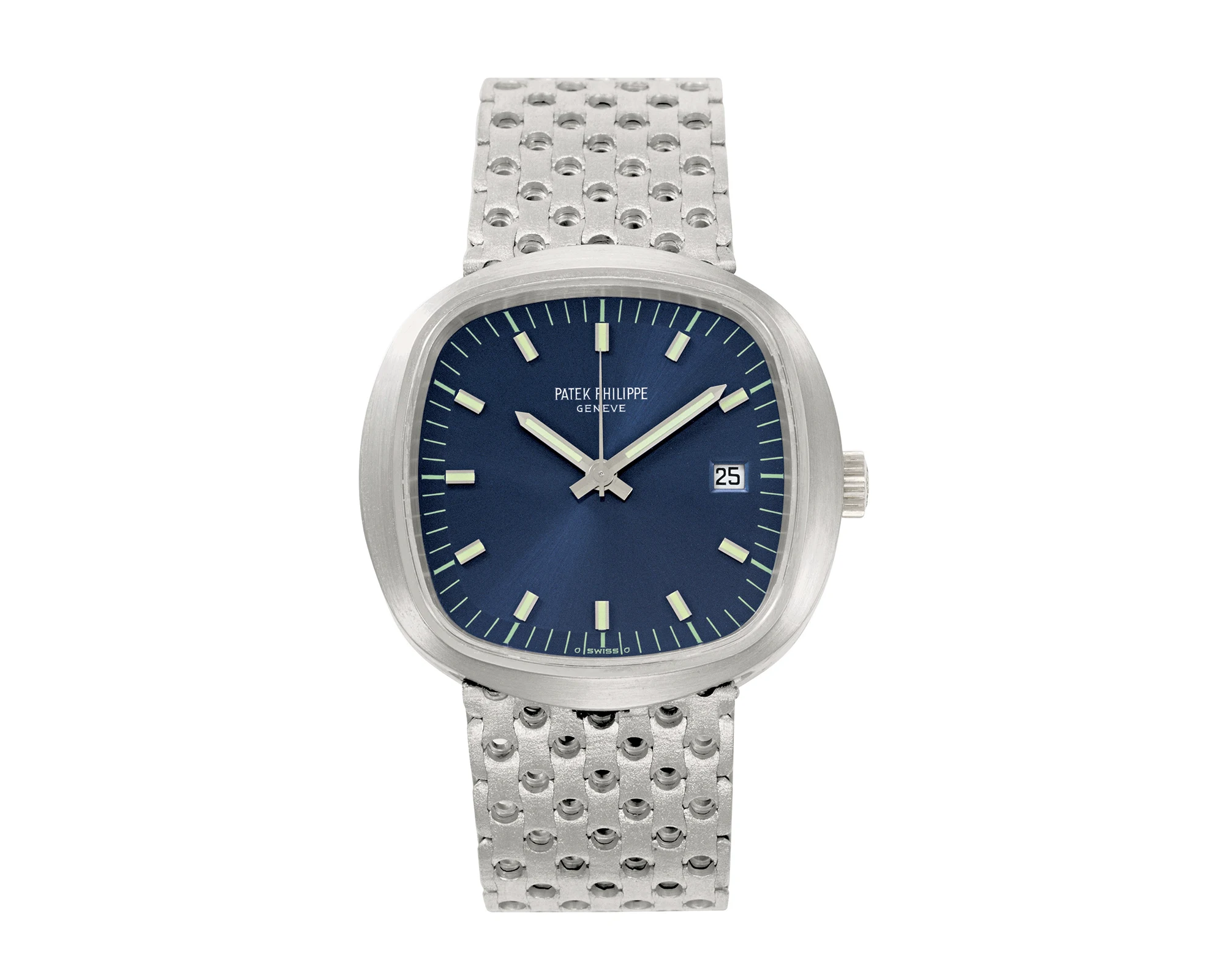
The Ref. P482
Who is the new watch for?
At Patek Philippe, the watch is categorised as sporty and elegant, and the Cubitus certainly has a large presence on the wrist – significantly larger than most watches from the Stern family to date. This makes it attractive to all those for whom other collections are perhaps too classic. The Cubitus is for buyers who appreciate an eye-catcher on the wrist, and with the numerous inspirations from the Nautilus design, almost everyone interested in a Nautilus is now also a potential Cubitus customer.
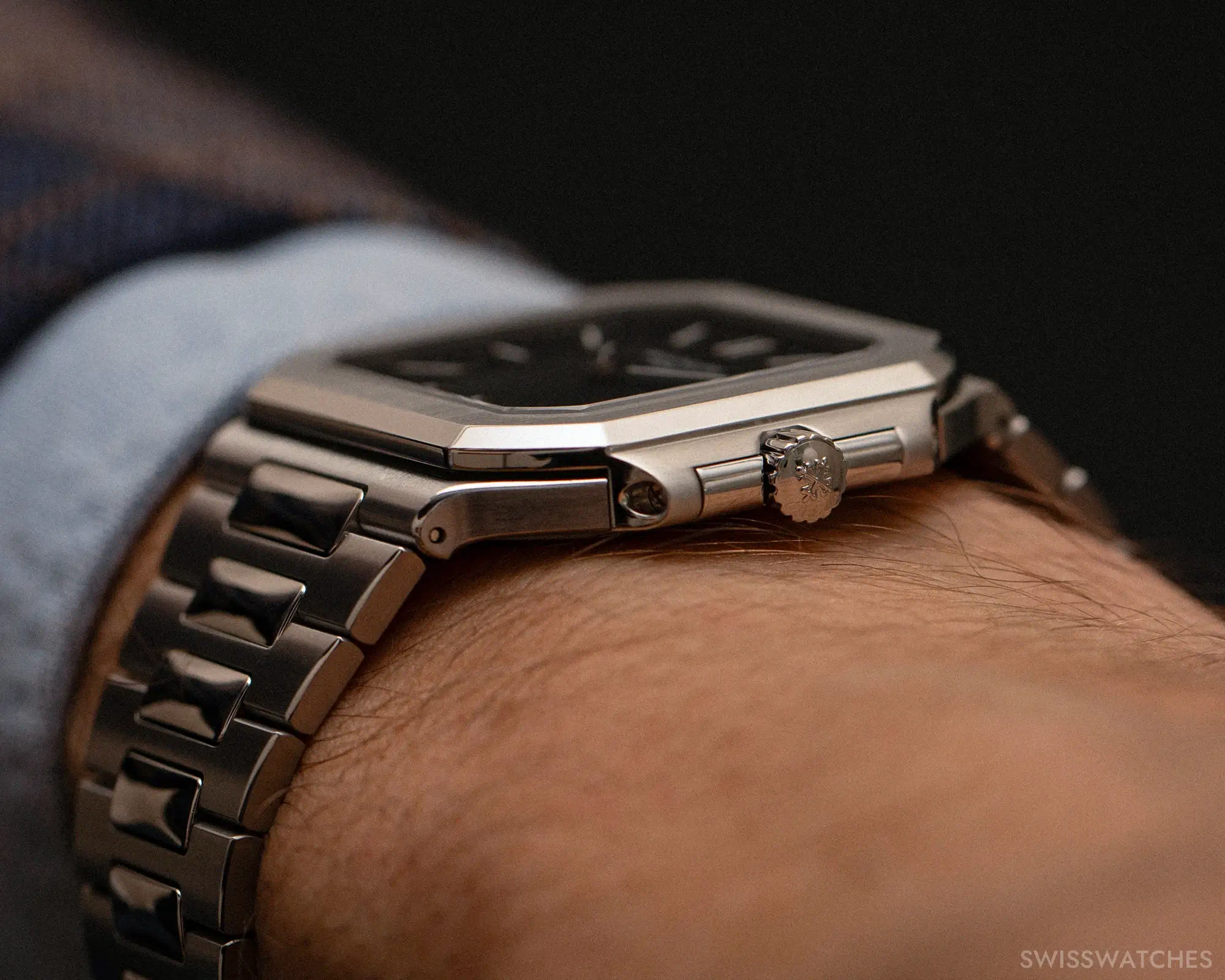
At the same time, the new models are typically Patek Philippe and therefore exciting for every collector of the manufacture, especially in the platinum version with the new movement. After all, it is somewhat silly to talk about entry-level and other models for this brand anyway. Anyone who owns a Calatrava may still dream of Grande Complications, but the reverse is also true: anyone who already owns highly complex references will in most cases also enjoy wearing the somewhat simpler watches from the range.
Is the Cubitus limited?
The very short answer is no – at least not to a maximum number of pieces. Like most of the company’s references, the new Cubitus models will be part of the main catalogue. The somewhat lengthier answer would be that at the same time, the demand for this very special novelty is purportedly already high. Every half-serious collector of the brand will want to own at least one, and there is also Patek’s hope of expanding the clientele associated with the Cubitus. Patek Philippe is thought to currently produce around 72,000 watches a year. If you divide this up among less than 350 sales outlets worldwide, each of them theoretically receives around 205 watches a year. However, these are watches from a wide variety of families, and how large the Cubitus share of total production will be remains a company secret.
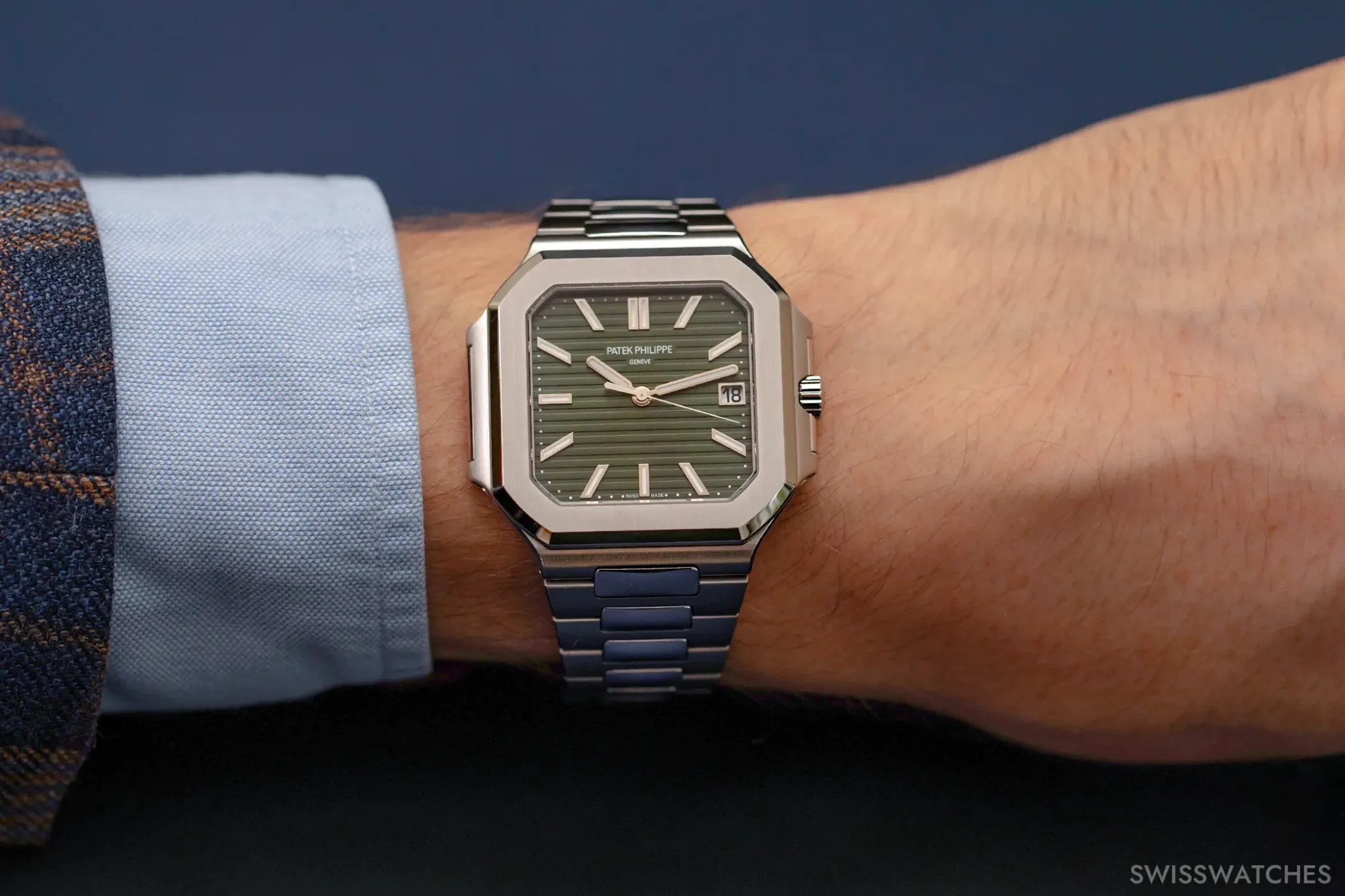
How much does the Patek Philippe Cubitus cost?
The pure steel Cubitus 5821/1A costs 40,557 euros – significantly more than an Aquanaut Ref. 5167A, which is currently priced at 23,340 euros. It is also more than the price of a white-gold Calatrava 6007G (38,590 euros). In purely monetary terms at least, the new line is therefore anything but the new ‘entry-level Patek-Philippe’, as was previously rumoured. In bicolour, the Cubitus costs 60,257 euros, and in platinum with the new complication, 86,908 euros.
Is it a collector’s item or an investment?
Even passionate collectors naturally have an eye on the costs of their hobby and do not completely ignore the issue of value development. At the same time, countless soldiers of fortune and speculators have now turned the secondary market into an exciting source of income, which has very little to do with genuine enthusiasm for watchmaking. The Patek Philippe Cubitus will presumably make both groups happy. For all friends of the horology house, this watch represents a milestone in Thierry Stern’s management of the company, thus making it a collector’s item of great desirability. The speculator faction, on the other hand, can assume that at least the first Cubitus‘ will be offered on the secondary market at a significant premium. Will this remain the case and will the Cubitus be as sought-after as the Nautilus and Aquanaut in the medium and long term? Only the market can and will answer that. With this in mind, it is interesting to note from Thierry Stern that sporty-elegant watches should never account for more than 40 percent of production, that the proportion of steel models is significantly lower, and that the Cubitus quantities will ultimately be at the expense of the quotas for Nautilus and Aquanaut.

The new Cubitus ref. 5821-1A-001
The latter are therefore becoming even rarer, while the visual proximity to the Nautilus is likely to be a further plus point for the Cubitus‘ value retention. However, not all Patek Philippe references from the current collection are being traded at high premiums any more. But even that is only a snapshot in time. Past experience shows that the premiere references of a new model are often particularly exciting for collectors with a long-term perspective. Despite all the enthusiasm for the company’s watches, it is important to remember: until not so long ago, the issue of return on investment was not a decisive factor in the purchase of new timepieces such as these, which are primarily intended to touch the soul of the buyer. Or as Thierry Stern puts it, ‘Customers often say that they want to invest in a Patek Philippe – which sometimes sounds frightening to me.’ But as long as they only mean that they believe in the brand and its values, it is, of course, a great compliment.
Where can you get a Patek Philippe Cubitus?
It is rumoured that several thousand Cubitus watches will be produced in the first year, and the first ones are due to arrive at dealers in a week’s time.
Also read the interview with Patek Philippe president Thierry Stern HERE.
